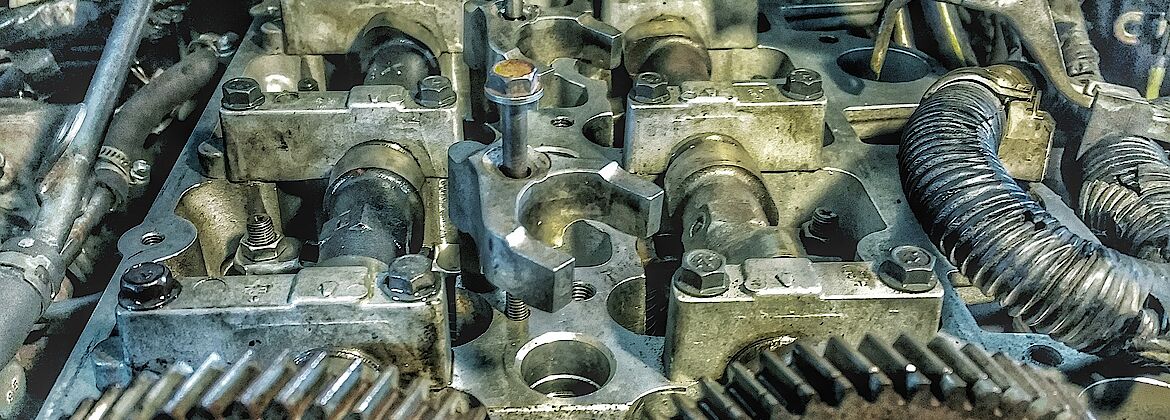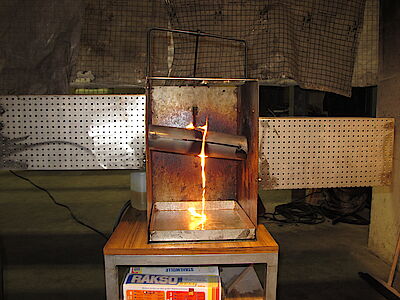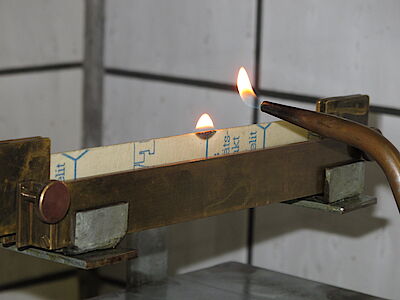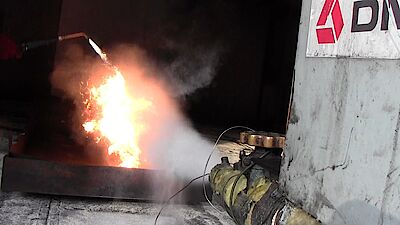Oils - everything flows smoothly
Liquids for power transmission, lubricants
Unnecessary losses due to corrosion and wear alone in Germany are estimated at 35 billion euros per year. We help to save materials and costs. Our consulting in this area goes far beyond the usual testing spectrum. Whether in mechanical engineering, power plant technology, steel industry, mining, or the food industry - tribology is becoming increasingly important for many industrial sectors.
Our experts conduct chemical, physical, and technological examinations and assessments of lubricants and hydraulic fluids. Additionally, we offer compatibility tests of fluids with standard elastomers or customer seals, as well as corrosion tests with different metallic materials.
TÜV NORD Test Seal
Your top-quality products are characterized by consistent quality, and to independently confirm this, we offer our exclusive testing and certification program. This program is aimed at manufacturers and distributors of tribological products such as oils, lubricants, and additives. If you regularly have your products checked for consistent product quality, we award the TÜV NORD Test Seal, which can then be used on the products.
Our offer for manufacturers and distributors:
- Testing the physical properties of the products
- Evaluation of consistent parameters within the tolerance limits of the testing program
- Independent testing laboratory
- Regular, recurring checks
- Test mark with reach
- Trust with end customers
- Guarantee of longevity and extension of service life when used in machinery
- Flexible design of the test framework according to the product's requirements
Our services at a glance
- Hydraulic fluids based on mineral oil according to DIN 51524-T1 to T3
- Fire-resistant hydraulic fluids according to the 7th Luxembourg Report, DIN EN ISO 12922, DIN 24320
- Testing in the four-ball apparatus according to DIN 51350 / DIN EN ISO 20623
- Mechanical testing in the vane pump according to DIN 51389 / DIN ISO 20763
- Mechanical testing in the FZG gear rig test machine according to DIN ISO 14635 (Procedure A/8.3/90 and A/16.6/90)
Grease tests
- Mechanical testing in the modified FZG gear rig test machine according to DIN ISO 14635-3 FZG test method A/2.8/50 for greases corresponding to NLGI classes 0 to 000
Special tests
- Compatibility tests of hydraulic fluids with standard test elastomers at different temperatures and durations, e.g., NBR 1, EPDM 1, FPM 1 (ISO 6072)- volume and hardness changes
- Compatibility tests with commercial seals (use elastomers) at different temperatures and durations, volume and hardness changes
- Corrosion tests of fluids with various metallic materials (DIN ISO 7120 / ASTM D 665, DIN EN ISO 4404 T. 1 + 2
fire risk
The use of fire-resistant hydraulic fluids falls under this category. The testing and assessment of these material properties are standardized in Germany and Europe. Furthermore, there are international regulations that describe corresponding test procedures and the evaluation of the results. Below, various classification and testing standards for hydraulic fluids are described and explained.
DIN EN ISO 12922
Fire-resistant hydraulic fluids, lubricants and industrial oils - international and national requirements
Requirements for hydraulic fluids in the categories HFAE, HFAS, HFB, HFC, HFDR, and HFDU – DIN EN ISO 12922, DGUV Regel 113-020 and Stahl-Eisen-Betriebsblätter (SEB)
In the international context, DIN EN ISO 12922 ("Requirements for hydraulic fluids") describes various types of hydraulic fluids. These are distinguished either based on their water content in categories HFAE, HFAS, and HFB, or based on their synthetic composition in HFC, HFDR, HFDU. Each of the mentioned types of fluids is prescribed a certain degree of fire resistance in addition to mechanical properties. This measure is determined by four different test methods, which are described below.
In the national context, the DGUV Regel 113-020 ("Hydraulic hose assemblies and hydraulic fluids - Rules for safe use") requires, with reference to DIN EN ISO 12922, the use of fire-resistant fluids for the application areas of mining, metal die-casting plants, and the steel industry. The latter describes its own requirements for fire-resistant hydraulic fluids of type HFDU for hydraulic systems with and without possible foreign water contamination in its so-called SEB (SEB 181 223 and SEB 181 224).
Furthermore, the VDMA Einheitsblatt 24317 describes the technical minimum requirements for fire-resistant hydraulic fluids, including the applicable test procedures with reference to DIN EN ISO 12922.
DIN EN ISO 20823
Determination of the flammability characteristics of liquids in contact with hot surfaces
The tendency of a liquid to ignite on a hot surface is determined according to DIN EN ISO 20823. In this test, a small amount of hydraulic oil is dripped onto a preheated surface (the temperature is pre-set depending on the type, e.g., 400°C for HFDU fluids), and then the effect is assessed. The liquid either does not ignite, burns only on the hot surface, or burns and drips into the collecting pan while still burning. According to the standard requirements, non-ignition can be considered as "passing."
DIN EN ISO 14935
Determination of the afterburn time of highly flammable liquids on a wick
In the test according to DIN EN ISO 14935, a small rectangular aluminum silicate plate is immersed in the liquid and used as a wick. A flame, no larger than that of a lighter, is held to the "wick" for a specified time, and the burning behavior is evaluated: does the wick continue to burn independently, and if so, for how long. The flaming times are successively increased from 2 s to 30 s.
DIN EN ISO 15029
Determination of the ignition properties of spray jets of highly flammable liquids DIN EN ISO 15029 Part 1 DIN EN ISO 15029 Part 1
Another method for demonstrating the high flammability of hydraulic fluids is the spray jet ignition tests according to DIN EN ISO 15029, Parts 1 and 2. In this test, the liquid is sprayed under high pressure from a nozzle and is exposed to a welding torch flame for Part 1, or a stabilized propane flame for Part 2. Factors to be evaluated for Part 1 include the afterburn time of the flame, while for Part 2, flammability and flame length indices, as well as smoke density, are determined.
Currently, only Part 1 (spray jet ignition test) is offered.Part 2 (Buxton) is not offered until further notice. For more information, please contact us.
The flammability index is a defined ratio of the inlet and outlet air temperatures with and without the spray jet. The flame length index is also a ratio, incorporating the length of the flame. Smoke density describes the intensity of the smoke generated by the flaming.






